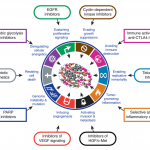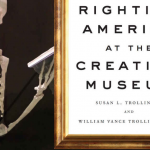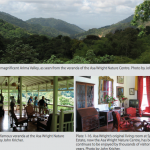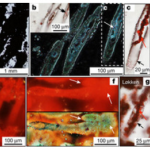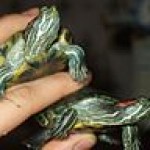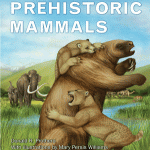evolution
And the #1 blog entry published thus far in 2017 discussed whether there was an evolutionary advantage to being stupid:
----
As I was looking through the scientific literature the other day, I came across an article published in 1973, "The Evolutionary Advantages of Being Stupid." With a title like that, how could I not read it?
In this article Dr. Eugene D. Robin discussed how larger and more complex brains are associated with greater intelligence, which by evolutionary standards was thought to be related to "superiority." He described how this line of thinking places man at the peak of…
Image of cave dwelling Mexican tetra By Citron via Wikimedia Commons
Mexican tetra (Astyanax mexicanus) are a fascinating example of divergent evolution. Over time, some of these freshwater river fish washed into caves where they continue to live. With perpetual darkness, these cavefish have lost their ability to see along with their skin pigmentation. Oxygen and food are also hard to come by in the caves. In fact, the cave dwelling fish may go for months without eating as they wait for seasonal floods to deliver foods. Dr. Cliff Tabin (Harvard Medical School) recently presented his…
I came across this amazing video on YouTube showing a species of octopus found in Northern Australia that is adapted to walk on land:
Samples of fish species from the Poeciliidae family show the diversity in color, fin size and body shape. Kansas State University researchers studied 112 species of these live-bearing fishes and found that males and females evolve differently. Image courtesy of Kansas State University
Dr. Michael Tobler and Dr. Zach Culumber at Kansas State University examined 112 species of live-bearing fish (Poeciliidae) and have made some interesting discoveries about their evolution. Their analyses included information on body shape, fin size, where the species are found and information on…
There's a good rule of thumb about headlines (other than Betteridge's Law of Headlines) that I use when perusing articles. It's particularly useful for evaluating headlines about medical and science stories. Basically, if a headline says something like, "everything you know about X is/might be/could be wrong" or "everything scientists know about X is/might be/could be wrong," it's a highly reliable indication that much of what is in the article that follows is very likely to be unmitigated, grade-A bullshit. I realize that it might be confirmation bias on my part (I am, after all, a skeptic…
Image of a variety of bird eggs from Internet Archive Book Images, via Wikimedia Commons
Ever wonder why bird eggs are shaped the way they are and what drives the variations in egg shapes across species? I never really wondered that either until I saw an article in Science that explained a possible reason...then I just HAD to know. Some theories had been proposed suggesting that their shape prevented eggs from rolling out of nests or otherwise sustaining damage, and so on. According to the new study, the shape of a bird's eggs may be related to their ability to fly…
A claim that scientists need to quit making:
I've written about these types of claims before. The first one--a claim that antimicrobial peptides were essentially "resistance proof," was proven to be embarrassingly wrong in a laboratory test. Resistance not only evolved, but it evolved independently in almost every instance they tested (using E. coli and Pseudomonas species), taking only 600-700 generations--a relative blip in microbial time. Oops.
A very similar claim made the rounds in 2014, and the newest one is out today--a report of a "super vancomycin" that, as noted…
When I was addressing this lunacy about how God exists because minds and mathematics are supernatural, I was also thinking about a related set of questions: biologically, how are numbers represented in the brain? How did this ability evolve? I knew there was some interesting work by Ramachandran on the representation of digits and numerical processing, coupled to his work on synesthesia (which is also about how we map abstract ideas on a biological substrate), but I was wondering how I can have a concept of something as abstract as a number -- as I sit in my office, I can count the vertical…
Every single regular reader of this blog has read or intends to read Stephen Jay Gould's The Panda's Thumb: More Reflections in Natural History. I just noticed that the Kindle version of it is available for $1.99, and I assume this is temporary. I already had the book on dead-tree matter, but I picked this up because ebooks are searchable! You will want one two.
Every single regular reader of this blog SHOULD want to read, or should have already read, Mary Doria Russell's excellent binary set including The Sparrow: A Novel and Children of God. (The Sparrow is first, COG second.)
Right now…
You've heard of Homo naledi, the strange "human ancestor" (really, a cousin) found a while back in South Africa. There were many skeletal remains in a cave, in the kind of shape you'd expect if they had crawled into the cave and died there, not much disturbed. They look enough like other members of our genus, Homo, to be called Homo, but if we assume that increase in brain size is the hallmark of our species, they seem to be an early grade.
Over the last ten years, we have come to appreciate the fact that our genus may have differentiated into multiple species that did not have a large brain…
Being a surgeon and physician, I've always been puzzled at how my fellow physicians and surgeons can become ensnared by pseudoscience and quackery to the point where they become proponents of various forms of irrational thinking. Examining "docs gone bad" has been an intermittent recurring theme of this blog going all the way back to at least 2005. Leaving aside obvious quacks, such as some of the cancer quacks I've discussed over the years, I've discussed a number of doctors who don't accept the validity of evolution, the most commonly discussed being Dr. Michael Egnor, the creationist…
Righting America at the Creation Museum (Medicine, Science, and Religion in Historical Context) is a strange book and I do not fully approve of it, even though I'm mentioned in it (not in a bad way).
Here is the write-up of the book provided by the publisher:
On May 28, 2007, the Creation Museum opened in Petersburg, Kentucky. Aimed at scientifically demonstrating that the universe was created less than ten thousand years ago by a Judeo-Christian god, the museum is hugely popular, attracting millions of visitors over the past eight years. Surrounded by themed topiary gardens and a petting…
Did you know cephalopods may have traded evolution gains for extra smarts? I didn't either. I don't believe it, anyway. The paper is fine, though, it's just the weird spin the media has been putting on it.
The actual title of the paper is Trade-off between Transcriptome Plasticity and Genome Evolution in Cephalopods, which is a lot more accurate. The authors discovered that there's a lot of RNA editing going on in coleoids. The process is not a surprise, we've known about RNA editing for a long time, but the extent in squid is unusual.
RNA editing is basic college-level stuff, so if your…
The Neotropical Companion by John Kricher came out years ago, in the late 80s if I recall correctly. I've got a copy of it around somewhere.
I loved that book because it did a great job integrating all the things in one place: animals, plants, habitats, evolution, etc. Even though I was working in the paleotropics at the time, I found it informative.
Then, more recently, I got a revised version of the same book. I've got it around somewhere. It is from the 1990s, I think. Great book, same idea as the first one, but with more in it, and a somewhat larger format. This dates to after my…
The earliest life must have been something like a small single celled organism, like a bacterium. Or at least, the earliest life that we can usefully conceive of, and potentially connect with living life. It has been suggested that life could have initially evolved at the site of submarine hydrothermal vents, which is a place these days teeming with life. So, it make sense to look for fossils of these early life forms in rocks formed at hydrothermal vents, but a long time ago.
The Nuvvuagittuq belt in Quebec is a geological formation that includes such rock.
There are two basic ways to…
By Copyleft [CC BY-SA 3.0, via Wikimedia Commons
As I was looking through the scientific literature the other day, I came across an article published in 1973, "The Evolutionary Advantages of Being Stupid." With a title like that, how could I not read it?
In this article Dr. Eugene D. Robin discussed how larger and more complex brains are associated with greater intelligence, which by evolutionary standards was thought to be related to "superiority." He described how this line of thinking places man at the peak of evolution resulting in our tendency toward an…
There was a conference sponsored by the Royal Society last month, titled New trends in evolutionary biology: biological, philosophical and social science perspectives. There have been a number of news stories about this event, some good, some bad. Here's one: can you tell what's wrong with it?
For example, speaking at the Royal Society was Melinda Zeder, who talked about the way in which modern synthesis fails to provide a reason for mankind’s turning to agriculture 10,00 years ago and its ensuing evolutionary impact. Growing crops may have taken years, so there could not have been a short-…
Large hairy elephants got me into paleoanthropology, eventually.
Cohoes Mastodon Exhibit in old New York State Museum, Albany, NY.
I had a strong interest in science, and it was nurtured and expanded by my frequent visits to the New York State Museum, and there was never a doubt in anyone's mind, anywhere, that the coolest exhibit at that museum was the Cohoes Mastodon exhibit. Barbarians eventually came along and tore that exhibit down, along with all the other fantastic and traditional museum displays, when they made the new, slick, produced for consumption and not intense engagement…
The Princeton Field Guide to Prehistoric Mammals ,by Donald R. Prothero, is the first extinct animal book that you, dear reader, are going to give to someone for the holidays.
This book is an interesting idea. Never mind the field guide part for a moment. This isn't really set up like a field guide, though it is produced by the excellent producers of excellent field guides at Princeton. But think about the core idea here. Take every group of mammal, typically at the level of Order (Mammal is class, there are more than two dozen living orders with about 5,000 species) and ask for each one, "…
I’m sure that most of you watched the Presidential debate on Monday night, just as I did. Over the years, these debates have always always painful for me to watch, given the candidates’ tendency to answer the question they want to answer rather than the question actually answered; to find ways to spew prepackaged talking points into answers, whether they’re related to the question or not; and, above all, to see how much spin they can get away with. Particularly annoying is when they pander to their base with particularly brain dead bon mots. Candidates from both parties do it, of course, but…
